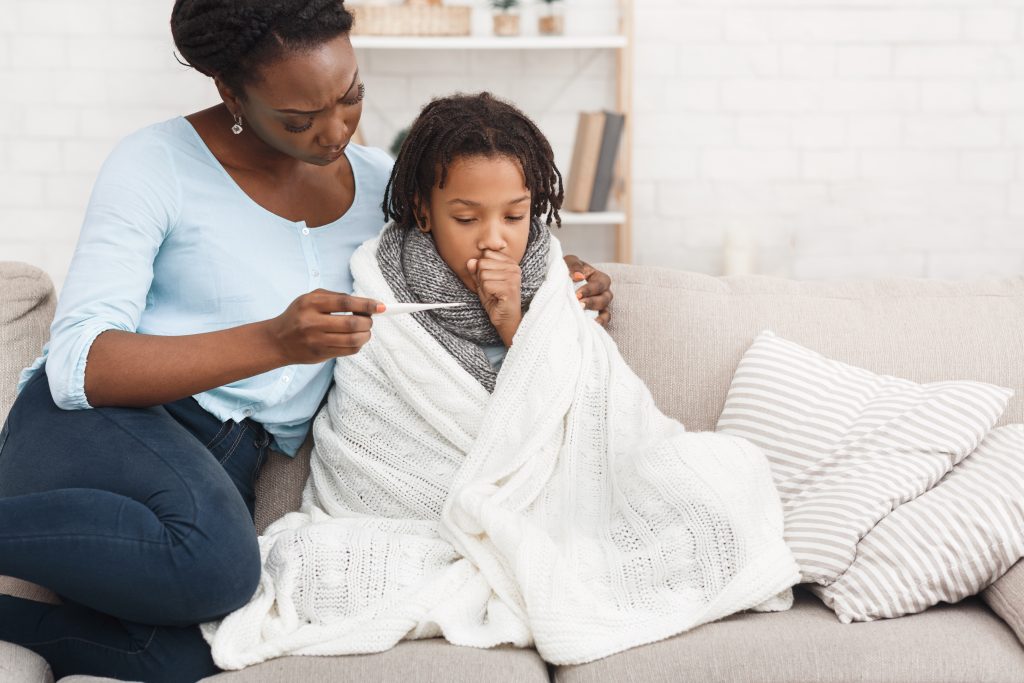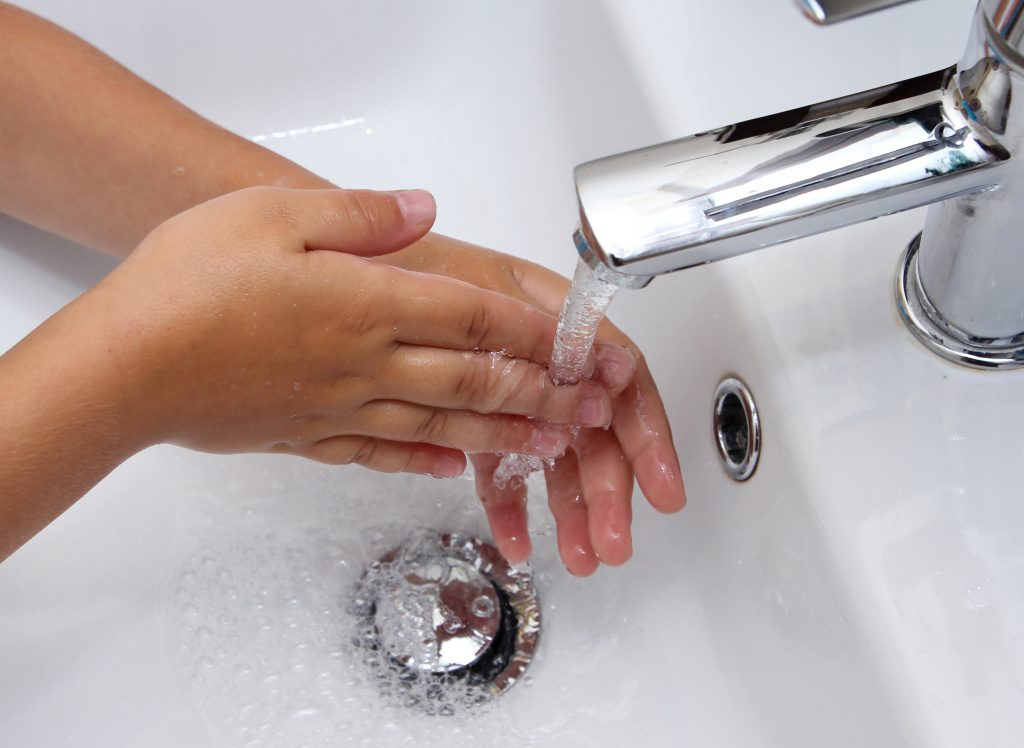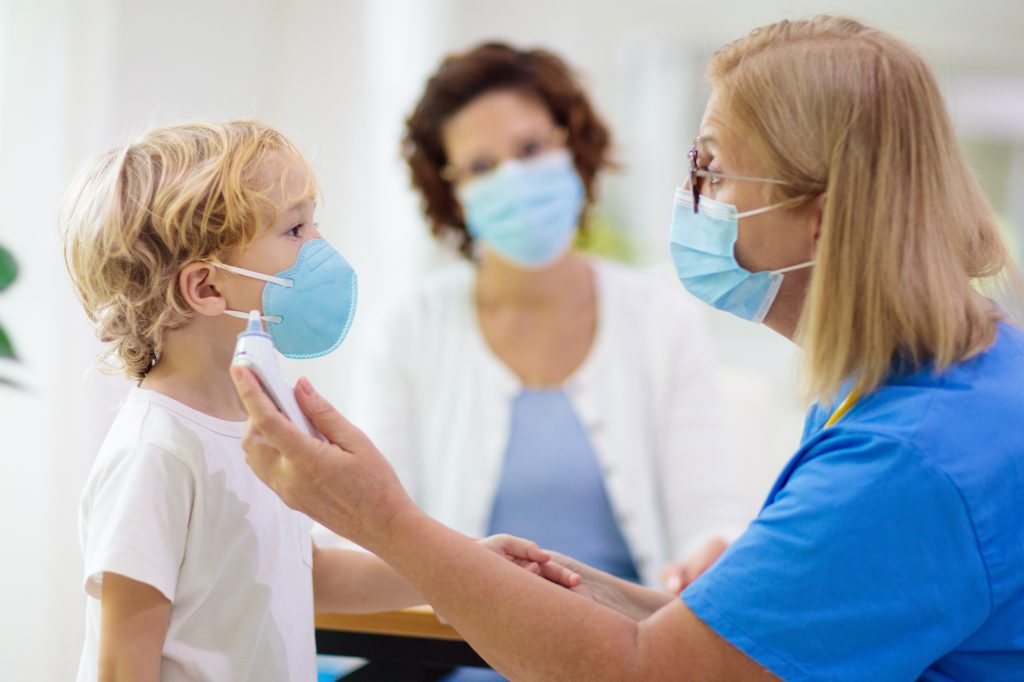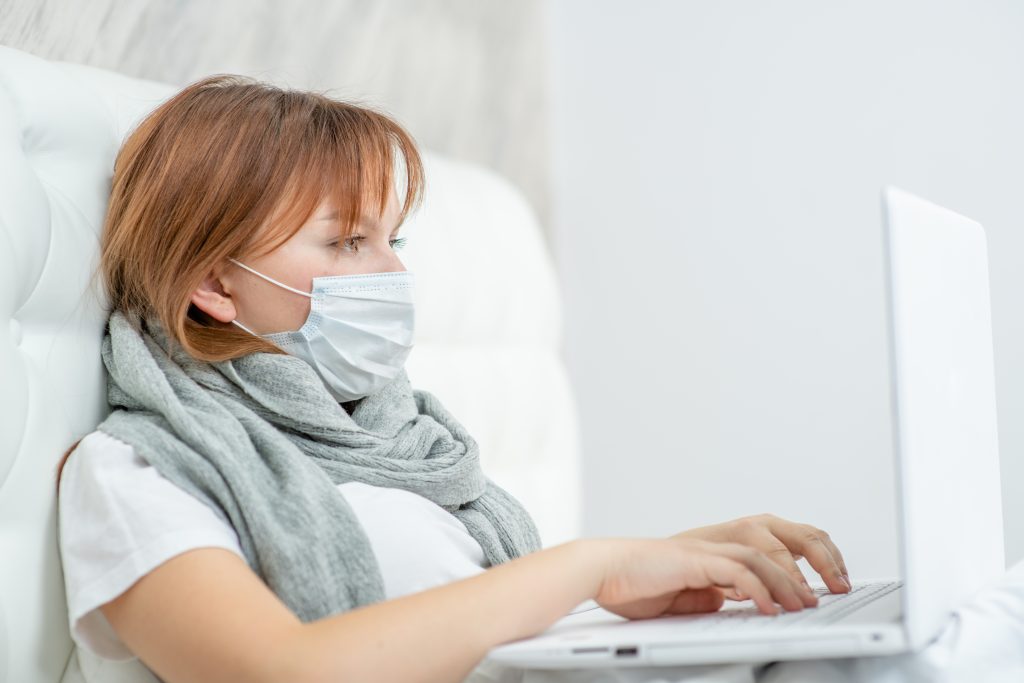Article originally published December 29, 2020.
Navigating COVID-19 concerns can be challenging for adults, but is even more difficult when it comes to children and teens. While, in general, children are at a lower risk of contracting or becoming severely ill with COVID-19, it is still important to understand symptoms of the virus in young people and what to do if your child is sick. Below is some information regarding what we currently know about how children and teens are affected by COVID-19.
Information on COVID-19
Fact: Children & teens can get COVID-19
Just like adults, children can be infected, become sick and spread the virus that causes COVID-19 – although compared to adults, fewer children have been affected. Children who are infected with COVID-19 but not experiencing symptoms (asymptomatic) can still spread the virus to others.
It is common for children with COVID-19 to experience mild symptoms or even no symptoms (asymptomatic). In the cases where children with COVID-19 do experience more severe symptoms, hospitalization, intensive care or a ventilator may be required to ensure the child is able to breathe properly. In rare cases, children may die from COVID-19.
Children with certain underlying conditions and babies under one year old are at a higher risk of developing severe COVID-19 symptoms. According to the CDC, some of these underlying conditions include:
- Asthma or chronic lung disease
- Diabetes
- Genetic, neurologic, or metabolic conditions
- Heart disease present since birth (congenital)
- Immunosuppression (weakened immune system due to certain medical conditions or being on medications that weaken the immune system)
- Medical complexity (children with multiple chronic conditions that affect many parts of the body who are often dependent on technology and other significant supports for daily life)
- Obesity
This list is not all-inclusive – continue to check with the CDC for the most up-to-date information about severe illness in children. Talk to your child’s healthcare provider for the most accurate information on your child’s specific risk.
The CDC is currently investigating a condition associated with COVID-19 in children called Multisystem Inflammatory Syndrome in Children (MIS-C), which is rare but can be serious. Our understanding of MIS-C is still developing. You can learn more about MIS-C here.

Fact: The most common symptoms of COVID-19 in children are fever and cough.
It can be easy to mistake COVID-19 for other common illnesses, such as colds, strep throat or allergies. The most common symptoms of COVID-19 in children are fever and cough. However, similar to adults, children maybe develop any of the following symptoms:
- Fever or chills
- Cough
- Nasal congestion or runny nose
- New loss of taste or smell
- Sore throat
- Shortness of breath or difficulty breathing
- Diarrhea
- Nausea or vomiting
- Stomachache
- Tiredness
- Headache
- Muscle or body aches
- Decreased appetite or poor feeding, especially in babies under one year old
If Your Child is Exposed to COVID-19
Monitor your child daily for COVID-19 symptoms.
Watch carefully for:
- Fever (temperature 100.4 °F or higher)
- Sore throat
- New uncontrolled cough that causes difficulty breathing (for a child with chronic allergic/asthmatic cough, watch for a change from their usual cough)
- Diarrhea, vomiting, or stomachache
- New onset of severe headache, especially with a fever
Keep track of who your child comes into close contact with.
Make sure you know who is in your child’s “COVID bubble” and who they are interacting with. If you or your child were exposed to someone who has COVID-19, your local health department may contact you. Listen to their advice and follow their recommendations in order to keep you and your family safe.

Take precautions to protect your child if you are sick with COVID-19.
If you have been exposed to or are sick with COVID-19, the CDC recommends that you separate yourself from others in your household. Wear a mask if you need to be around others inside or outside of your home.
If you will still be caring for your child, follow these guidelines to help prevent the spread of the virus:
- Wear a mask when in the same room. (Do not place a mask on: children younger than two years old, anyone who has trouble breathing or is unconscious, anyone who is unable to remove a mask without assistance.)
- Practice good hand hygiene by washing hands for at least 20 seconds using soap and water, or using hand sanitizer containing at least 60% alcohol if soap and water are not available.
- When possible, try to maintain at least six feet of distance from the child.
- Open a window to increase ventilation in the area you are in.
- Frequently disinfect commonly touched surfaces and any items that you need to give to the child.
- Watch for signs and symptoms of COVID-19 in any household members:
- Monitor yourself for symptoms
- Check the child’s temperature twice a day and monitor them for COVID-19 symptoms, such as fever or cough
- Contact your child’s healthcare provider if they develop symptoms
- Try to keep the child away from anyone who is at high risk of developing severe COVID-19 symptoms

Keep your child home and call their healthcare provider if your child gets sick
If your child has been exposed to the virus that causes COVID-19 and has developed symptoms:
- Keep your child home and limit their contact with others to prevent the spread of the virus.
- Contact your child’s healthcare provider to determine whether an evaluation or test for COVID-19 is necessary. If your child has been exposed to COVID-19, use the CDC’s Coronavirus Self Checker to help evaluate your child’s symptoms and assist you in deciding on next steps.
- Keep yourself safe while still providing necessary care for your child by using prevention techniques when possible, such as wearing a mask, practicing proper hand hygiene and maintaining six feet of distance. Be sure to watch for warning signs of their illness worsening. You can learn more about the CDC’s recommendations here.
- Inform your child’s school or care facility that your child is sick. Be sure to keep the organization up-to-date on any COVID-19 tests and results.
- Familiarize yourself with your child’s school or care facility policies regarding when a sick child can return
- Talk to your child’s healthcare provider or review proper guidelines about when your child can safely be around others. Take your child back to school or other in-person activities only once they are no longer at risk of spreading COVID-19.
Your child may need to stay home for a period of time, even if a healthcare provider determines that your child does not have COVID-19. Talk to your child’s healthcare provider and review your child’s school or care facility policies regarding when a sick child can return.
In a medical emergency, call 911 or bring your child to the emergency department.
Please do not avoid or delay seeking the medical attention your child needs: our staff is here to care for you. Fairfield Medical Center has implemented multiple policies to protect our patients and community from the threat of COVID-19. Through partnership with Nationwide Children’s Hospital, FMC and our pediatric health providers are prepared to offer excellent care to children of all ages.
If your child is showing any of these emergency warning signs, don’t delay – seek emergency medical care immediately.
- Trouble breathing
- Pain or pressure in the chest that doesn’t go away
- New confusion
- Can’t wake up or stay awake when not tired
- Bluish lips or face
This list does not include all possible symptoms. If your child is experiencing any other symptoms that are concerning to you, call your child’s healthcare provider immediately.
Click here to learn more about FMC’s emergency and urgent care locations.
Source: Centers for Disease Control and Prevention
